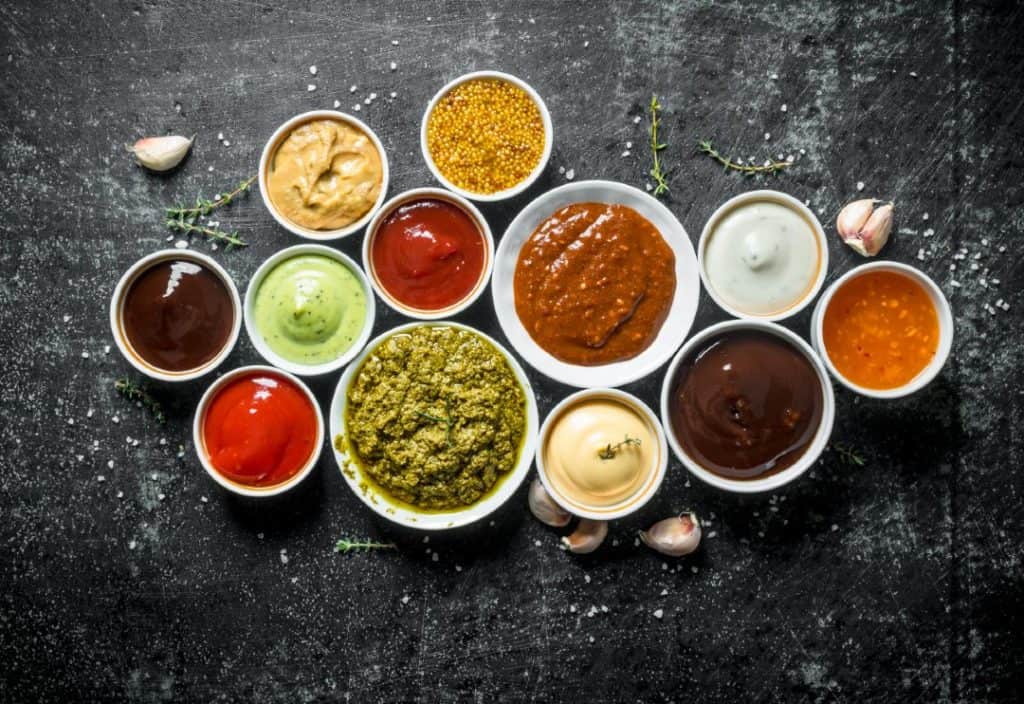Dealing with food allergies or trying to cut back on sodium intake? Luckily several healthy homemade soy sauce alternatives are easy to make and delicious. There are even a few soy sauce alternatives that are available for purchase, including tamari and shoyu.
What Is Shoyu, and How Is It Different From Soy Sauce?
The truth is, both shoyu and tamari are types of soy sauce, but there are a few key differences. Like Chinese soy sauce, both shoyu and tamari are made from fermented soybeans. However, Shoyu is a Japanese soy sauce variety made with wheat, giving it a sweeter and milder flavor. Tamari is another Japanese variety made with only soybeans and does not contain wheat, making it a great gluten-free soy sauce replacement for those with celiac disease or gluten sensitivities.
Making Soy Sauce Substitutes at Home
If you’d prefer to make your own soy sauce substitute at home, there are plenty of options. Below, we’ve rounded up a few delicious recipes to show you how to make your own soy sauce.
Soy-Free Soy Sauce
If you’re dealing with a soy or wheat allergy, this gluten-free and soy-free soy sauce recipe from Nutfreewok.com is for you:
Ingredients
- 1 cup water
- 1 tablespoon reduced-sodium beef base
- 1 tablespoon unsulphured molasses
- 1 tablespoon apple cider vinegar
- 1/4 teaspoon granulated garlic powder
- 1/4 teaspoon ginger powder
- a pinch of black pepper
- 1 to 1.5 teaspoon salt to taste
Instructions
- Combine water, beef base, molasses, apple cider vinegar, garlic, ginger, and black pepper in a small pot, bring to a boil, and boil on medium heat for 15 minutes.
- Continue to boil and frequently check until the amount is reduced to about 1/4 cup, approximately another 5 minutes.
- Remove from heat, add salt (adjusting amount according to taste and dietary needs), and stir to dissolve.
- Transfer to a glass container and refrigerate up to one week.
Low Sodium Soy Sauce Alternative
If you’re looking to lower your sodium intake, try this recipe from The Spruce Eats. While there are no truly sodium-free soy sauce options, this healthy alternative only contains minor amounts.
Ingredients
- 2 tablespoons unsalted beef broth
- 1 tablespoon red wine vinegar
- 1 teaspoon balsamic vinegar
- 2 teaspoons molasses
- 1 teaspoon sesame oil
- 1/8 teaspoon garlic powder
- Black pepper (to taste)
- 1/4 cup water (boiling)
Instructions:
- Combine all ingredients in a small pot and boil until the liquid is reduced by half – about 15-20 minutes.
For a vegetarian option, replace the beef broth with vegetable broth. This will alter the flavor and make the sauce taste less like traditional Chinese soy sauce but is still a great low sodium option for vegetarians.
Soy Sauce Alternative for Those With a Wheat Allergy
If you’re cooking for someone with a sensitivity to wheat, this recipe from Allrecipes.com is an excellent substitute for typical soy sauce. It’s important to note that you should read the labels on each ingredient you use in the recipe to prevent accidental allergen exposure.
Ingredients:
- 4 tablespoons beef bouillon
- 4 teaspoons balsamic vinegar
- 2 teaspoons dark molasses
- ¼ teaspoon ground ginger
- 1 pinch white pepper
- 1 pinch garlic powder
- 1 ½ cups water
Instructions:
- In a saucepan over medium heat, stir together the beef bouillon, balsamic vinegar, molasses, ginger, white pepper, garlic powder, and water.
- Boil gently until the liquid is reduced to about 1 cup, about 15 minutes.
Vegan-Friendly Soy Sauce
If you’re looking to avoid animal products, this plant-based soy sauce alternative from Tastessence.com is the perfect solution. It also non-perishable as long as it’s kept in a tightly sealed container.
Ingredients:
- 1½ cups of vegetable stock
- 1½ cups of water
- 4 tablespoons of cider vinegar
- 1 tablespoon of dark molasses
- 1 teaspoon of sesame oil
- ¼ teaspoon of ground ginger
- 1 pinch of pepper
- 1 pinch of salt
Instructions:
- Blend together the vegetable stock, simmering water, cider vinegar, dark molasses, sesame oil, ground ginger, and a pinch of pepper and salt.
- The ingredients should form 2 cups of a uniform liquid.
- For a denser sauce, boil the concoction till the quantity reduces to half (i.e., to one cup).
Takeaway
Adding soy sauce to a dish is a great way to make your meal more flavorful. But, if you have a food sensitivity or are looking to cut back on sodium, you may not be able to enjoy the condiment. Luckily, with these soy sauce alternatives, you won’t be able to tell the difference.




